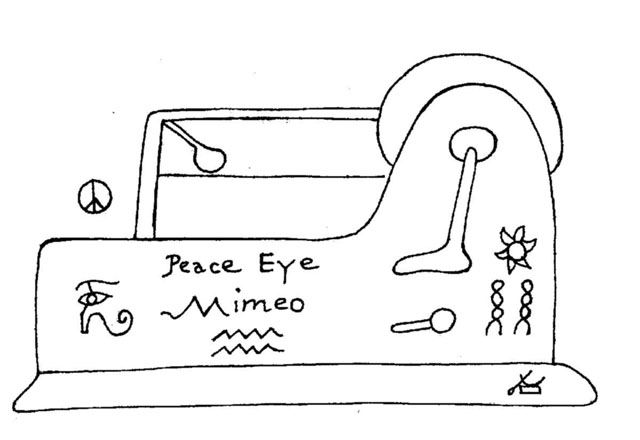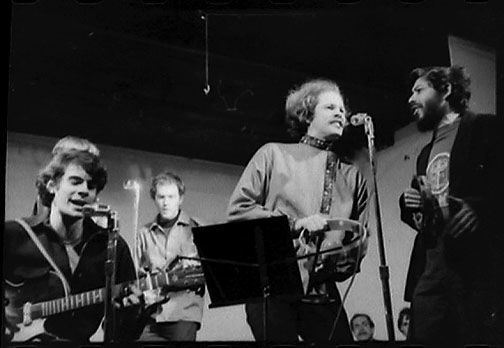 |
| Anne Tardos and Jackson Mac Low in Rhinecliff, NY, 1981. |
While we'll see the idea of poetry and performance (or better yet, poetry in performance) made manifest in many different ways by many different poets over the course of the many classes we'll be spending on the topic, there's perhaps no better place to start than with Jackson Mac Low.
While we do no harm in calling Mac Low's ambitious hybrid works poetry, there's a lot more going on in them than what we typically think of poetry. There's a significant compositional emphasis placed upon aleatory procedures, a lá John Cage, with many of his pieces being written through chance operations (things like coin flips, cards drawn from a deck, tossing the I Ching, etc.) or conceptual games (like anagrams and acrostics), and this spirit of randomness carries over into the live realization of these works, which frequently give reader/performers a tremendous amount of interpretive leeway. At the same time, we also see very careful attention paid to scoring the performance of other pieces, with intricate instructions concerning the tempo, pitch, and duration. I've selected a number of Mac Low pieces, often presented with explanations and/or instructions, to give you a sense of the breadth of his poetics, and provided PennSound recordings (of work in the PDFs or similar pieces from related series) as well. In some cases, I've reproduced sections covering certain series from two different volumes — the earlier Representative Works (published in 1985), and a later posthumous collection, Thing of Beauty (edited by Mac Low's widow and frequent collaborator, Anne Tardos) — so there might be some overlap. (n.b. each linked title below is a separate PDF)
Gathas
- Milarepa Gatha [MP3] (Mac Low / Tardos) / [MP3] (Mac Low)
- Free Gatha 1 & 2 [MP3] (Mac Low / Tardos)
- Free Gatha 1 [MP3] (Mac Low / Charles Bernstein / Nick Piombino)
- see also: The 8-Voice Black Tarantula Crossword Gatha [MP3]
Is That Wool Hat My Hat?
Daily Life
Night Walk
More Recent Things
I don't want to overwhelm you with readings, but did want to present one standalone piece by Anne Tardos that I find particularly charming: 1975's "Refrigerator Defrosting": [MP3] / with vocal improvisation [MP3]
 |
Tardos' drawing of the recording setup, "the score as it were." |
Finally, to give some framing to today's readings — and our unit on performance in general — I'd like you to take a look at Susan Sontag's groundbreaking essay, "Happenings: an Art of Radical Juxtaposition," from 1966's Against Interpretation: [PDF]








